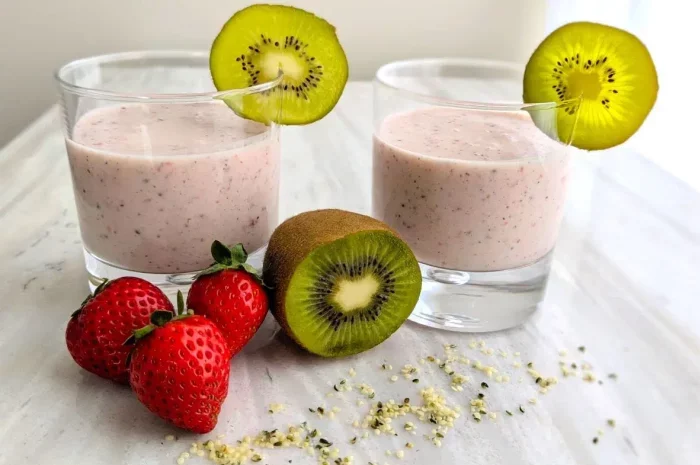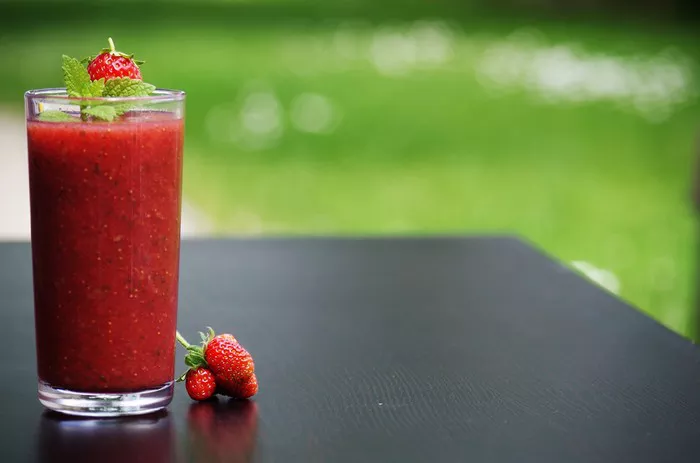Smoothies are a popular and convenient way to enjoy a delicious and nutritious snack or meal. They are packed with vitamins, minerals, and antioxidants, and can be easily customized to suit your tastes and dietary needs. But what makes a smoothie truly great? In this article, we will explore the secrets to making the perfect smoothie—from choosing the right ingredients to blending them to perfection.
The Key to a Great Smoothie
The secret to making a good smoothie is balance. A well-made smoothie should have the right combination of texture, flavor, and nutrition. This balance comes from the careful selection of ingredients and the proper technique for blending them. Whether you want a fruity refreshment or a creamy protein-packed meal replacement, the key lies in choosing high-quality ingredients and following a few simple tips to achieve the perfect consistency.
1. Choose Your Base Liquid
The first step in making a good smoothie is selecting a base liquid. This liquid provides the fluid necessary for blending and helps to create the desired consistency. There are many options to choose from, depending on your preferences and dietary needs.
Popular Base Liquids
Water: Water is the simplest and most calorie-friendly option. It keeps your smoothie light and refreshing.
Milk (Dairy or Non-Dairy): Dairy milk gives smoothies a creamy texture and adds protein. Non-dairy milks like almond, soy, coconut, or oat milk are great for those who avoid dairy or want a different flavor profile.
Juices: Fruit juices can add extra flavor and sweetness. However, they can also be high in sugar, so be mindful of the amount you use.
Yogurt: Yogurt, especially Greek yogurt, is a good option for adding creaminess and a protein boost. It also adds probiotics, which are great for digestive health.
Coconut Water: Coconut water is hydrating and adds a subtle tropical flavor, making it a great choice for fruity smoothies.
Tip:
Start with about 1 cup of liquid for a single serving. You can always add more if the smoothie is too thick.
2. Add Your Fruits and Vegetables
Fruits and vegetables are the heart of any smoothie. They provide essential nutrients, natural sweetness, and flavor. The key is to choose a mix of ingredients that not only taste great together but also provide a well-rounded nutritional profile.
Best Fruits for Smoothies
Bananas: Bananas are a smoothie classic. They add natural sweetness, a creamy texture, and a boost of potassium.
Berries (Strawberries, Blueberries, Raspberries): Berries are packed with antioxidants, vitamins, and fiber. They also add vibrant color and tangy sweetness to your smoothie.
Mango: Mangoes bring tropical sweetness and a smooth, silky texture.
Pineapple: Pineapple adds a refreshing tropical flavor and contains bromelain, an enzyme that may help with digestion.
Peaches and Apricots: These fruits provide a soft, juicy texture and a sweet, fragrant flavor.
Best Vegetables for Smoothies
Spinach: Spinach is a mild-tasting green that blends well into smoothies. It’s rich in iron, vitamin K, and other essential nutrients.
Kale: Kale has a stronger flavor than spinach, but it’s packed with vitamins A, C, and K, and is full of fiber.
Carrots: Carrots are a great source of beta-carotene and add a natural sweetness to your smoothie.
Avocado: Avocados make your smoothie incredibly creamy and are packed with healthy fats and fiber.
Tip:
Use frozen fruits and vegetables for a thicker, colder smoothie without needing extra ice. This also helps preserve nutrients.
3. Add Protein for Sustained Energy
Adding protein to your smoothie is essential for keeping you full and providing sustained energy. Protein helps with muscle repair, immune function, and overall health. There are many ways to boost the protein content of your smoothie.
Protein Sources for Smoothies
Protein Powder: Whey protein, plant-based protein (like pea or hemp protein), or collagen peptides are all good options for adding protein.
Greek Yogurt: As mentioned earlier, Greek yogurt is a fantastic source of protein and adds creaminess to your smoothie.
Nut Butters (Peanut, Almond, Cashew): Nut butters are a great way to add protein, healthy fats, and flavor to your smoothie.
Tofu: Silken tofu is a great plant-based protein option that blends smoothly into any smoothie.
Tip:
Aim for around 10–20 grams of protein per serving, depending on your needs.
4. Add Healthy Fats
Healthy fats are essential for absorbing fat-soluble vitamins and maintaining a balanced diet. Adding healthy fats to your smoothie can also help improve satiety and flavor.
Healthy Fats for Smoothies
Avocado: Avocados are an excellent source of heart-healthy monounsaturated fats and will make your smoothie creamy.
Chia Seeds and Flaxseeds: These seeds are rich in omega-3 fatty acids and fiber, which help promote digestion and heart health.
Coconut Oil: Coconut oil adds healthy fats and a slight tropical flavor to your smoothie.
Nuts and Nut Butters: As mentioned, nuts like almonds, walnuts, and cashews, or nut butters, provide healthy fats and a creamy texture.
Tip:
A tablespoon of chia seeds, flaxseeds, or nut butter should be sufficient for a single smoothie.
5. Boost With Superfoods
To take your smoothie to the next level, consider adding superfoods. Superfoods are nutrient-dense ingredients that can boost the nutritional profile of your smoothie.
Popular Superfoods for Smoothies
Spirulina: This algae is a potent source of protein, vitamins, and antioxidants.
Acai Berries: Acai berries are loaded with antioxidants, healthy fats, and fiber, making them a great addition to smoothies.
Maca Powder: Maca is a root vegetable that is believed to help balance hormones and boost energy.
Cacao Nibs: Raw cacao is rich in antioxidants and adds a chocolatey flavor to your smoothie.
Tip:
Superfoods are often very concentrated, so a teaspoon or a small scoop is usually enough.
6. Sweeten to Taste
Some fruits are naturally sweet, but others may need a little help. Instead of using refined sugar, opt for natural sweeteners that offer more nutritional benefits.
Natural Sweeteners for Smoothies
Honey or Maple Syrup: Both honey and maple syrup are natural sweeteners that add a rich flavor to your smoothie. They also contain trace minerals.
Stevia: Stevia is a no-calorie sweetener derived from a plant. It’s a great option for those who want to avoid sugar.
Dates: Dates are naturally very sweet and also packed with fiber and minerals. They are a great choice for adding sweetness and texture.
Tip:
Use sweeteners sparingly to keep the smoothie healthy. Start with a small amount and taste test to adjust as needed.
7. Blend Until Smooth
Once all your ingredients are in the blender, it’s time to blend! The key to a smooth texture is to blend long enough to break down the ingredients into a uniform consistency. If your blender struggles with thicker ingredients, try adding a little more liquid to help it blend smoothly.
Tips for Blending:
Layering: Place the softest ingredients (like leafy greens or frozen fruit) closest to the blades to make blending easier.
Pulse First: Start by pulsing the ingredients to break them down before blending continuously. This prevents the ingredients from sticking to the sides of the blender.
Adjust Consistency: If your smoothie is too thick, add a little more liquid. If it’s too thin, add more frozen fruit or ice cubes to thicken it up.
Tip:
Blend for at least 30 seconds, depending on the strength of your blender, to ensure everything is fully combined.
8. Enjoy Immediately
Smoothies are best enjoyed fresh, as the nutrients and flavors are at their peak right after blending. If you need to take your smoothie with you, consider using a thermos or a portable smoothie bottle to keep it cold and fresh.
Tip:
If you have leftovers, store them in an airtight container in the fridge for up to 24 hours. Shake or stir well before drinking.
Conclusion
Making a good smoothie comes down to balancing the right ingredients—liquid, fruits, vegetables, protein, healthy fats, and sweeteners. The best smoothies are made with whole, natural ingredients and a bit of creativity. Whether you want a refreshing breakfast or a post-workout snack, there is no shortage of ways to create a smoothie that is both delicious and nutritious. By following these tips and experimenting with different combinations, you’ll be able to make a smoothie that suits your taste and provides all the benefits you need for a healthy lifestyle.
Related topics
























